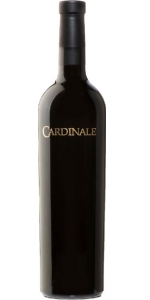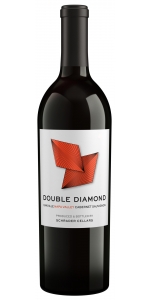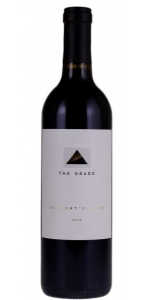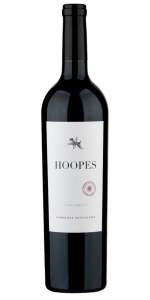Colgin Cellars Jubilation Napa Valley 2019
3 bottles with free shipping for: $825.00
6 bottles with free shipping for: $1,620.00
12 bottles with free shipping for: $3,180.00
| BUY MORE! SAVE MORE! | ||||||||||||||||||||
|
| Country: | United States |
| Regions: | California California (Napa) |
| Winery: | Colgin |
| Grape Type: | Cabernet Sauvignon |
| Organic: | Yes |
| Vintage: | 2019 |
| Bottle Size: | 750 ml |
Jubilation is our newest wine in the Colgin Cellars collection. Jubilation is our Cabernet Sauvignon-based wine created with a selection of barrels that display earlier drinking characteristics from our three hillside vineyards. As our vine age has matured and small additions have been made to our original holdings, we had the privilege of increasing our selectivity. Following the blending of our single-vineyard wines, we were fortunate to have a collection of barrels that conveyed the same elegance and complexity for which we are known, yet on a more supple, approachable frame. Jubilation is a wine ready to enjoy now, with the pedigree to age gracefully in the cellar, maintaining the Colgin Cellars’ hallmarks of perfume, freshness, and minerality. The inaugural bottling of Jubilation from the 2016 vintage was released in late 2020. Future vintages are destined for select members of the fine wine trade.
For nearly three decades, Colgin Cellars has been dedicated to enriching and sustaining the hallowed history of Napa Valley wine production. Our goal has been to craft elegant and profound wines that inspire memories.
Since 1992, Colgin Cellars navigates the exciting future of Napa Valley wine with the same focus, passion, and reverence that guided our first thirty years.
1988: Ann Colgin attends Napa Valley Wine Auction and falls in love with the Napa Valley
1992: Fruit is sourced from the Herb Lamb vineyard to craft the first wine
1995: The first vintage of Colgin Cellars, 1992 “Herb Lamb” is released
1996: Colgin purchases a historic vineyard site originally planted in 1861, replanted in 1881, which was later removed in the early 1900s
1997: 3.5 of the original acreage at the historic property is replanted and the site is named Tychson Hill, in honor of Josephine Tychson who owned and farmed the property in the 1880s
1998: Colgin purchases a 125-acre parcel overlooking Lake Hennessey and begins planting a 20-acre vineyard in addition to building the winery facility
1999: The first vintage of “Cariad” is produced
2000: Ann Colgin marries Joe Wender on 09/09 at the newly named IX Estate
2000: The first vintage of “Tychson Hill” is produced
2000: Vines are planted at IX Estate, including 4 acres planted to Syrah
2002: The first vintage of “IX Estate” and “IX Estate” Syrah is produced
2005: Colgin is named “One of the Fifty Greatest Wine Estates in the World” by Robert M. Parker, Jr.
2007: The uppermost parcel of Josephine Tychson’s holdings are added to Tychson Hill
2014: The final piece of Josephine Tychson’s original land grant is added to the southern end of Tychson Hill
2016: Colgin Cellars celebrates its 25th vintage
2017: Colgin Cellars becomes a strategic partner with LVMH and Bernard Arnault, and a member of Vins d’Exception alongside Château Cheval Blanc, Château d’Yquem, and Domaine du Clos des Lambrays
2021: Colgin Cellars celebrates thirty years crafting wines from Napa’s distinct hillsides
2022: A new parcel of IX Estate is planted
Cardinale Napa Valley Cabernet Sauvignon is made from 91% Cabernet Sauvignon, 9% Merlot.
Super structured and with minerality to spare, this Cabernet Sauvignon offers a real presence on the palate from start to finish. Generous notes of dark chocolate balance beautifully with a blue and black fruit flavor explosion, finishing with a subtle whisper of rose petal.
Reviews:
- James Suckling 98 Points
-Jeb Dunnuck 98+ Points
Double Diamond by Schrader Oakville Cabernet Sauvignon is made from 100 percent Cabernet Sauvignon.
Barrels: 54% new French oak, 46% second-use Schrader Darnajou French Oak
The 2022 Cabernet Sauvignon offers concentration, lively acidity, and refined tannins that have become the hallmark of the 2022 vintage. The nose holds notes of black raspberry, toasted cedar, juicy plum, and pennyroyal mint—a Napa Valley Cabernet Sauvignon signature. The palate is mouthwatering with intricately woven layers of blackberry compote, dark chocolate shavings, oolong tea, and flint. The dynamic flavors carry across the mid-palate in vivid harmony into a long, floral finish. This wine is ready to drink upon release but will cellar well for years to come.
Double Diamond is sourced exclusively from a complement of prime vineyard estates. Sourced from the same famed vineyards as its beloved inspiration Schrader Cellars in Napa Valley’s world-renowned Oakville AVA, including our To Kalon Vineyard.
Realm Cellars Bard Red Blend is made from a blend of 83% Cabernet Sauvignon, 7% Merlot, 6% Cabernet Franc, 3% Petit Verdot, 1% Petite Sirah.
The 2021 is the largest and most complex blend we've ever made with dozens of components from vineyards across the realm of Napa Valley. This vintage includes new vineyard sources from Calistoga, Rutherford and Oak Knoll AVA, allowing us to broaden our painter’s palette. The Bard is generally more approachable in its youth than some of our single vineyard bottlings, but we expect it to age for many years to come. This is our first time using a technical cork for this wine, which should guarantee consistency and improve longevity.
Blend: 83% Cabernet Sauvignon, 7% Merlot, 6% Cabernet Franc, 3% Petit Verdot, 1% Petite Sirah.
Review:
Lastly, the 2021 The Bard checks in as 83% Cabernet Sauvignon, 7% Merlot, 6% Cabernet Franc, and the rest Petit Verdot and Petite Sirah. This beauty has a killer bouquet of cassis, spring flowers, graphite, chalky minerality, and violets. This carries to a full-bodied, seamless, silky, flawlessly balanced effort revealing fine tannins, a good sense of freshness, and a thrilling finish.
-Jeb Dunnuck 98 Points
The Grade Cabernet Sauvignon Serpent's Back Napa Valley is made from 100 percent Cabernet Sauvignon.
Review:
The 2019 Cabernet Sauvignon Serpent's Back shows a more aromatic, high-toned side of this site. Bright red/purplish berry fruit, pomegranate, cinnamon and sweet floral accents are all laced together. The Serpent's Back is the most refined of these three Cabernets, but it has plenty of Calistoga punch.
-- Antonio Galloni 95 Points
The Grade Cabernet Sauvignon Serpent's Back Napa Valley is made from 100 percent Cabernet Sauvignon.
Review:
The 2019 Cabernet Sauvignon Serpent's Back shows a more aromatic, high-toned side of this site. Bright red/purplish berry fruit, pomegranate, cinnamon and sweet floral accents are all laced together. The Serpent's Back is the most refined of these three Cabernets, but it has plenty of Calistoga punch.
-- Antonio Galloni 95 Points
Hoopes Cabernet Sauvignon Napa Valley is made from 100 percent Cabernet Sauvignon.
“Made with the same care and thoughtfulness of our single vineyard series, the Hoopes Napa Valley Cabernet Sauvignon is a blend of fruit from a rich variety of sites. The synthesis of these vineyards, which represent the complex tapestry of Napa terroir, results in sublime balance, intense aromas and luscious textures that bring the diverse valley into harmony in a glass. Born out of curiosity, this Cabernet Sauvignon has matured into a stunning wine, which over delivers in intensity and richness. We are proud of this beautiful example of what the Napa Valley can do.”
This wine has a very pretty fruit-forward nose filled with plummy sweet tarts, cherry compote, cocoa nibs, hard candy, cedar box, and allspice. The entry is fresh and clean with a core of delicious generous fruit. It has a lovely elegant texture, weighty middle and resolves into a mocha filled finish.
- back
Robert Mondavi Winery Cabernet Sauvignon is made from 91% Cabernet Sauvignon, 5% Petit Verdot, 3% Cabernet Franc, 1% Malbec.
The 2021 Robert Mondavi Napa Valley Cabernet Sauvignon shows notes of plum, blackberry, licorice, chocolate, violet, and warm spice. Dark plum and black fruit carry through to the palate. Fresh and lively with plush tannins and a polished structure.
Review:
Soft around the edges and firm in the middle, this red- and black-fruited wine has a creaminess on the palate, delivering a mix of red cherries, blackberries and blueberries wrapped in moderate tannins. Contains small amounts of petit verdot, cabernet franc, malbec and merlot.
-James Suckling 92 Points
Oumsiyat Chardonnay is made from 100 percent Chardonnay.
Intense aromas of luscious tropical fruit notes of ripe peach and pineapple are refreshingly balanced on the palate through to a clean and zesty finish.
RS: 2 g/L
The Chardonnay grapes were sorted prior to vinification to ensure the fruit was healthy and ripe. The grapes were then pressed, and the must was racked to stainless steel fermentation tanks, where the must was fermented at 14 to 16°C with selected yeasts. The wine did not undergo malolactic fermentation to maintain the crisp, fresh style. The wine rested on its fine lees for three months adding texture and subtle complexity before being gently filtered and bottled.










